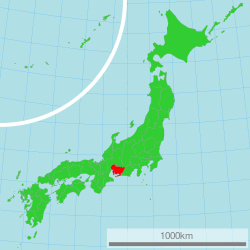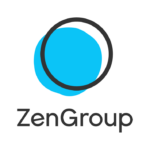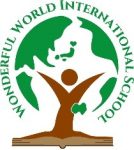 Spotlight
SpotlightSearch Jobs
 Spotlight
Spotlight
1-to-1 English Instructor – Nagoya (Sakae)
- Aichi, Japan
- ¥1,630 - ¥2,170 / Lesson
- English Level
- Native level
- Japanese Level
- Not necessary
- Visa Sponsorship
- Future possibility / Renewal

Exciting Teaching Opportunity in Aichi Prefecture (In the heart of Japan)
- Aichi, Japan
- ¥230,000 - ¥250,000 / Month (Depends on teaching experience)
- English Level
- Native level
- Japanese Level
- Basic Level
- Visa Sponsorship
- Yes

Teacher & Marketer with Entrepreneurial Spirit
- Aichi, Japan
- ¥220,000 / Month
- English Level
- Native level
- Japanese Level
- Basic Level
- Visa Sponsorship
- Future possibility / Renewal

Nagoya and surrounding areas – Full Time English conversation for Children
- Aichi, Japan
- ¥230,000 - ¥250,000 / Month
- English Level
- Native level
- Japanese Level
- Basic Level
- Visa Sponsorship
- No
 Spotlight
SpotlightExperienced Teacher for Respected International Kindergarten/Preschool
- Aichi, Japan
- ¥260,000 - ¥300,000 / Month (negotiable based on experience and qualifications)
- English Level
- Native level
- Japanese Level
- Not necessary
- Visa Sponsorship
- Yes

Part-Time English and Nursery teacher in Aichi
- Aichi, Japan
- ¥2,000 / Hour
- English Level
- Native level
- Japanese Level
- Not necessary
- Visa Sponsorship
- Future possibility / Renewal

Kindergarten Teacher in Nagoya
- Aichi, Japan
- ¥260,000 - ¥300,000 / Month (Plus contract completion bonus)
- English Level
- Native level
- Japanese Level
- Basic Level
- Visa Sponsorship
- Yes
Autonomous Vehicle Engineer/Engineering Manager
- Aichi, Japan
- ¥350,000 - ¥700,000 / Month (Salary: ¥350,000 – ¥700,000 per month. 4-month trial period at 250~350,000JPY/month)
- English Level
- Conversational Level
- Japanese Level
- Conversational Level
- Visa Sponsorship
- Yes
Dental Materials Sales (Q社)
- Aichi, Japan
- ¥220,000 / Month (ボーナス有り)
- English Level
- Business Level
- Japanese Level
- Basic Level
- Visa Sponsorship
- Future possibility / Renewal
Elementary English Teacher (Start April or earlier)
- Aichi, Japan
- ¥10,000 / Day
- English Level
- Native level
- Japanese Level
- Not necessary
- Visa Sponsorship
- No
 Spotlight
SpotlightZenPlus Customer Support – Expand your knowledge of Ecommerce operations!
- Osaka, Japan
- ¥270,000 / Month (or more per month - Based on previous experience and ability. Bonus twice a year in June and December.)
- English Level
- Business Level
- Japanese Level
- Business Level
- Visa Sponsorship
- Yes
International Preschool Teacher
- Aichi, Japan
- ¥250,000 - ¥320,000 / Month (negotiable based on experience and qualifications)
- English Level
- Native level
- Japanese Level
- Basic Level
- Visa Sponsorship
- Future possibility / Renewal
 Formed from Mikawa and Owari Provinces at the time of the Meiji Restoration, Aichi is a mostly urban prefecture in the Chubu region of central Honshu where the third largest city in Japan, Nagoya, is located. Aichi has a large population of 7.5 million with 2.3 million of those people residing in the capital, Nagoya, and 6.9 million in the greater metro area. Aichi has the largest cluster of Japanese Brazilians (67,000 people) with neighboring Shizuoka second at 42,000 and then eight other prefectures in a distant third with populations ranging from 10,000-18,000. Aichi has a humid subtropical climate with hot summers, cool winters and rainfall throughout the year. With its eastern border facing the Pacific Ocean it is home to the very large Nagoya Port.
Formed from Mikawa and Owari Provinces at the time of the Meiji Restoration, Aichi is a mostly urban prefecture in the Chubu region of central Honshu where the third largest city in Japan, Nagoya, is located. Aichi has a large population of 7.5 million with 2.3 million of those people residing in the capital, Nagoya, and 6.9 million in the greater metro area. Aichi has the largest cluster of Japanese Brazilians (67,000 people) with neighboring Shizuoka second at 42,000 and then eight other prefectures in a distant third with populations ranging from 10,000-18,000. Aichi has a humid subtropical climate with hot summers, cool winters and rainfall throughout the year. With its eastern border facing the Pacific Ocean it is home to the very large Nagoya Port.
Aichi has particularly notable place in Japanese history with all three of the generals who unified the nation at the end of the Sengoku Period (Waring States Period) being born in Aichi and having their power bases there. The first two Oda Nobunaga and Toyotomi Hideyoshi were both born in Nagoya while the third, Tokugawa Ieyasu, who founded the Tokugawa Shogunate, was born in nearby Okazaki, Aichi.
Aichi has clusters of manufacturing facilities in several industries such that it had long led Japan in volume of manufactured products shipped by prefecture. With Toyota Motor being headquartered in Aichi, there is a myriad of production facilities of group companies and other suppliers. There is also significant production of aircraft, heavy industry, machinery, electronics and all assortment of other products. Additionally, Aichi has a long history of production of handicrafts such as Arimatsu and Narumi dyes, geta clog straps, enamelware (shippo), candle wax, silk dyeing (yuzen), festival dolls (sekku ningyo), Nagoya obi (sashes). Then, there are about 300 English conversation schools that hire native English teachers and about half as many other types of educational institutions that may employ foreign teachers.
The two most popular sites to see in Nagoya are the Atsuta Shrine and Nagoya Castle. Atsuta Shrine is the second-most revered shrine in Japan, after the Ise Grand Shrine. It holds around 70 festivals per year and is home to over 4,400 national treasures covering a period of 2,000 years. Nagoya Castle was restored after WWII and is considered to be a symbol of Nagoya. Other things to see in Nagoya include the Nagoya Port area with a themed shopping mall, Italia Mura, and the Port of Nagoya Public Aquarium; Higashiyama Zoo and Botanical Gardens; Higashiyama Sky Tower; Nagoya TV Tower; Legoland Japan; the Osu shopping district and nearby temples, Osu Kannon and Bansho-ji; Danpusan Kofun (burial mound); the Nagoya/Boston Museum of Fine Arts (N/BMFA); the Toyota Commemorative Museum of Industry and Technology; the Tokugawa Art Museum and the Tokugawa Garden; the Nagoya City Science and Art Museums. Outside the capital there is Kiyosu Castle, Meiji Mura and many fine beaches such as Himakajima Beach, Shinojima Beach, Akabane Beach, Utsumi Beach.
Some of the main festivals in Aichi are the Inuyama Festival in early April, the Chiryu Festival in early May, the Kamezaki Shiohi Festival in early May, the Atsuta Festival in June, the Port Festival in July, the Owari Tsushima Tenno Festival in late July, the Nagoya Castle Summer Festival Castle in August and the Nagoya Festival in October.
Aichi is said to have its own special food culture based on unique fermentation of several products like miso, soy sauce, mirin, etc. Aichi miso in particular is said to become better with boiling such that there are many stewed dishes like miso katsu (pork cutlet with sweet miso sauce), miso-stewed udon (firmer than regular udon), doteni (miso tripe stew), miso oden, etc. Eel is popular and eaten in the Kansai style, grilled on a skewer without steaming and usually on top of rice or “hitsumabushi.” Kishimen, boiled, flat udon noodles in a soy-sauce broth topped with spices, fried bean curd, fish cakes, bonito flakes, etc., is a centuries old Nagoya food among the common people. Other local foods include tebasaki karaage (deep dried chicken wings in a sweet/spicy sauce and topped with sesame seeds), ankake spaghetti (thick noodles fried in lard topped with a thick sauce of stewed tomatos, onions and spices with a variety of possible toppings, Nagoya Kochin (specially raised local chicken), ten-musu (small rice balls filled with deep fried prawns).













